Descending from 19,000 feet to 12,000 feet, over a length of 70 km, Siachen glacier (“land of wild roses”) is the worlds highest battleground since the year 1984. India controls its entire glacial length, adjoining peaks and the three passes, which are the gateway between Karakoram and Ladakh. On the other hand, Pakistan controls its western glacial valley. It is estimated that the two nations, collectively have over 6,000 soldiers stationed at these formidable heights, manning over 150 posts, costing over US$500m annually. The military stand off leaves no scope for Pakistanis to ascend or for Indians to descend.

Map of Siachen glacier region

The military stand off at Siachen region

Isolated military posts in the Karakoram range at Siachen base camp
Having reached Nubra Valley from Leh, we followed Nubra river upstream, leading us to Siachen Glacier base camp. Here we were welcomed by the Sikh Light Infantry.
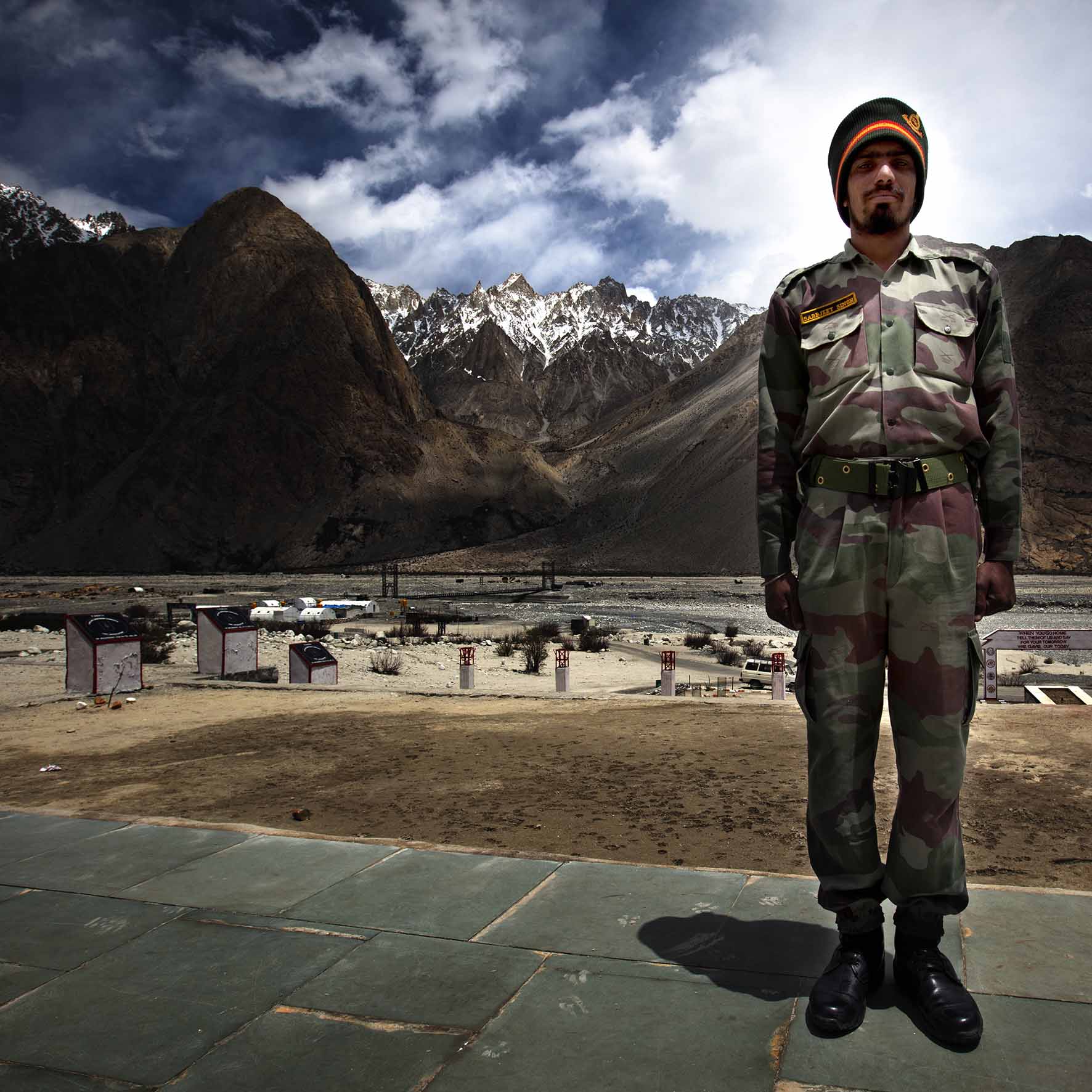
A soldier of the Sikh Light Infantry at Siachen base camp
On the western side of the Siachen Glacier, the Karakoram mountain range nestles the valleys of Baltistan, which is in the Pakistan Administered Kashmir. While Pakistan and India fight over this territory, it is a faintly remembered fact that if not for the strategic game changing role played by the Sikh Empire in the Karakorams, it would today be a part of Afghanistan. For nearly a century, the region of Baltistan, Karakoram and Kashmir were under the Durranis, the rulers of Afghanistan. This region was then known as the eastern frontier of Afghanistan. Under the expansive policy of Maharaja Ranjit Singh, the Lion of Punjab, the Sikh Empire having ousted the Afghanis from Punjab, in 1819 AD took over Kashmir. Thereafter the Sikh Empire turned its attention towards Ladakh and included it under the Lahore Darbar in 1834. After the demise of Ranjit Singh, the Lahore Darbar turned its attention towards Baltistan (West of Siachen in the Karakoram range), which they conquered in 1840 AD. The boundaries of the Sikh Empire now extended from Peshawar in the West to river Sutlej in East (where British India started) and from Multan in South, to Kashmir, Ladakh and Baltistan in the North.
The Sikh rule in Kashmir lasted from 1819 AD till 1846 AD and in Baltistan from 1840 AD till 1846 AD. Though the rule in the Baltistan, Ladakh and Kashmir region lasted a short period but it was a point of deflection for the regions history. Ranjit Singh was a liberal ruler, in whose cabinet there was a representation in high posts from both Hindu and Muslim community. His Prime Minister was Dhian Singh, the Dogra Hindu King of Jammu, whom he trusted the most. Dhian Singh’s brother, Gulab Singh, a Dogra Hindu was a commander in Ranjit Singh’s army. After the demise of Ranjit Singh in 1839 AD, Gulab Singh deceived the Sikh Empire by secretly joining hands with British to cut off the military supplies to Sikh Army fighting the British at river Sutlej in 1846 AD. In exchange, for helping win over Sikhs, Gulab Singh Dogra was awarded an independent title of Kashmir and Baltistan by the British. The Sikh Empire was thereafter annexed into British India Empire in the year 1849 AD.
Reflecting back, the Sikh Empire’s conquest over Kashmir, Ladakh and Baltistan is the reason why these territories finally found a place in the map of British India after 1846. If not for the conquest, this region would today have been a part of Afghanistan. Thereafter, during independence of India in 1947 AD, the region of Kashmir and Baltistan became disputed between Pakistan and India, leading to the current military fiasco in the Karakoram range.
While the contribution of Sikhs in forming the modern history of this region is now a less known fact but the annals of history are well aware of the sacrifices made by the Army of Lahore Darbar in the formidable Karakoram region.
At the war memorial in Siachen Glacier, I was pleased to find a plaque reflecting the verses of Guru Gobind Singh, the 10th Sikh Guru. A reminder to the soldiers of the Sikh Light Infantry that the righteousness of life is to be privileged to die in the battle field.

Siachen Base Camp : Verses by Guru Gobind Singh, 10th Guru of Sikhs, remind the Sikh Light Infantry of their duty
Having spent a few hours at Siachen base camp, briefly stepping on the receding glacial snowline, we headed back to Leh. Being a military zone, the region has no provision for a night stay.
The most impressionable sight during this journey was the shape of mountains along the Nubra river. This part of the Karakoram mountain range, I believe is the world’s steepest, with mountains rising literally ninety degrees from the ground, converging into pin-pointed peaks. When I say “pin-pointed”, believe me the top of these peaks offer stiff competition to the sharpness of pin tips.
In this isolated region, the power of perception and connection takes a quantum leap. As I tried to photograph the Creators magnificence in these strange peak formations, I was reminded of the verse by Saint Kabir,
Why search elsewhere?
Searching elsewhere, life ends.
In search, I returned after ascending the mountain
and found Him in my body castle
Kabir

Pointed peaks of Karakoram range

Pointed peaks of Karakoram range
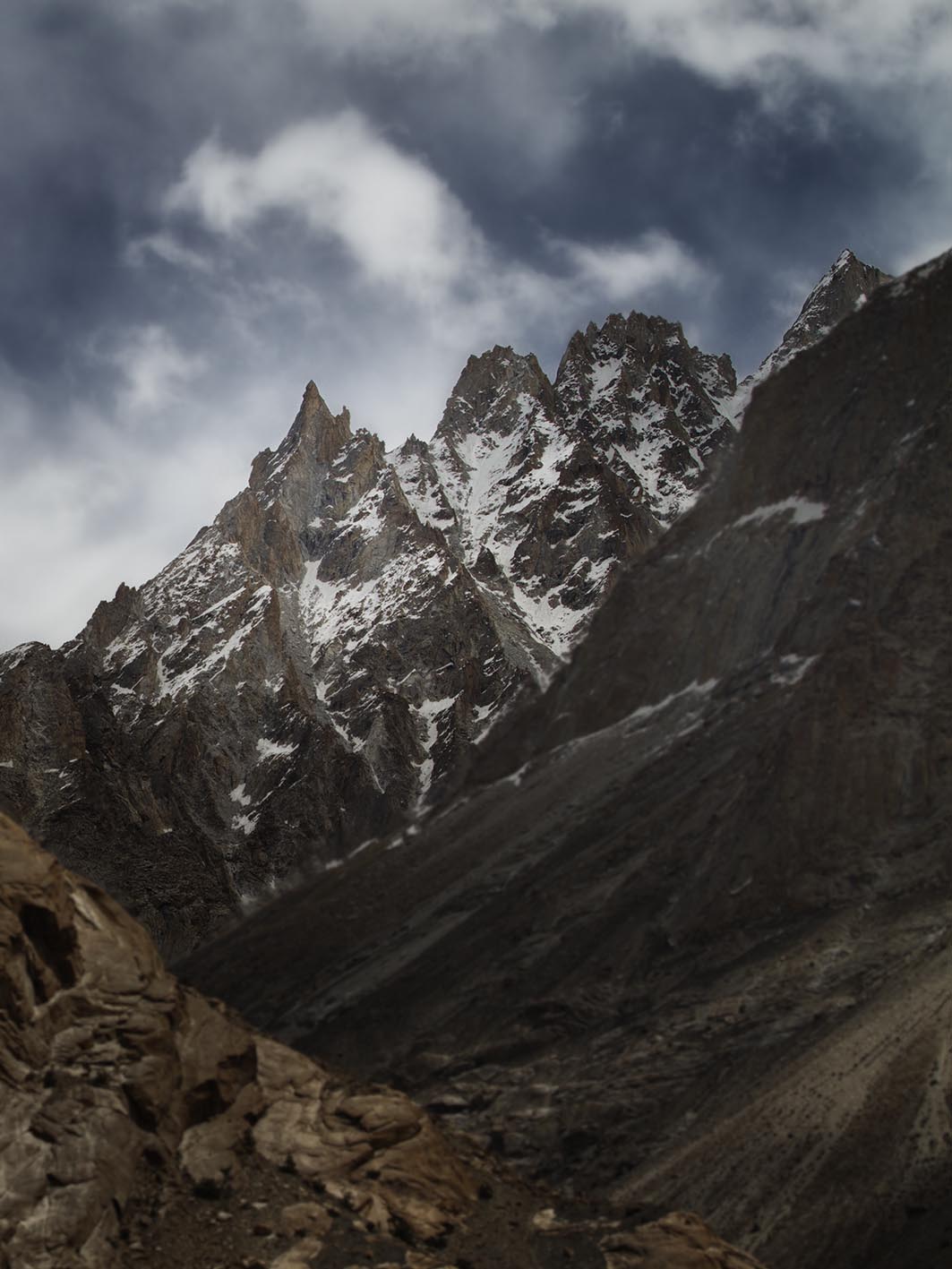
Pointed peaks of Karakoram range
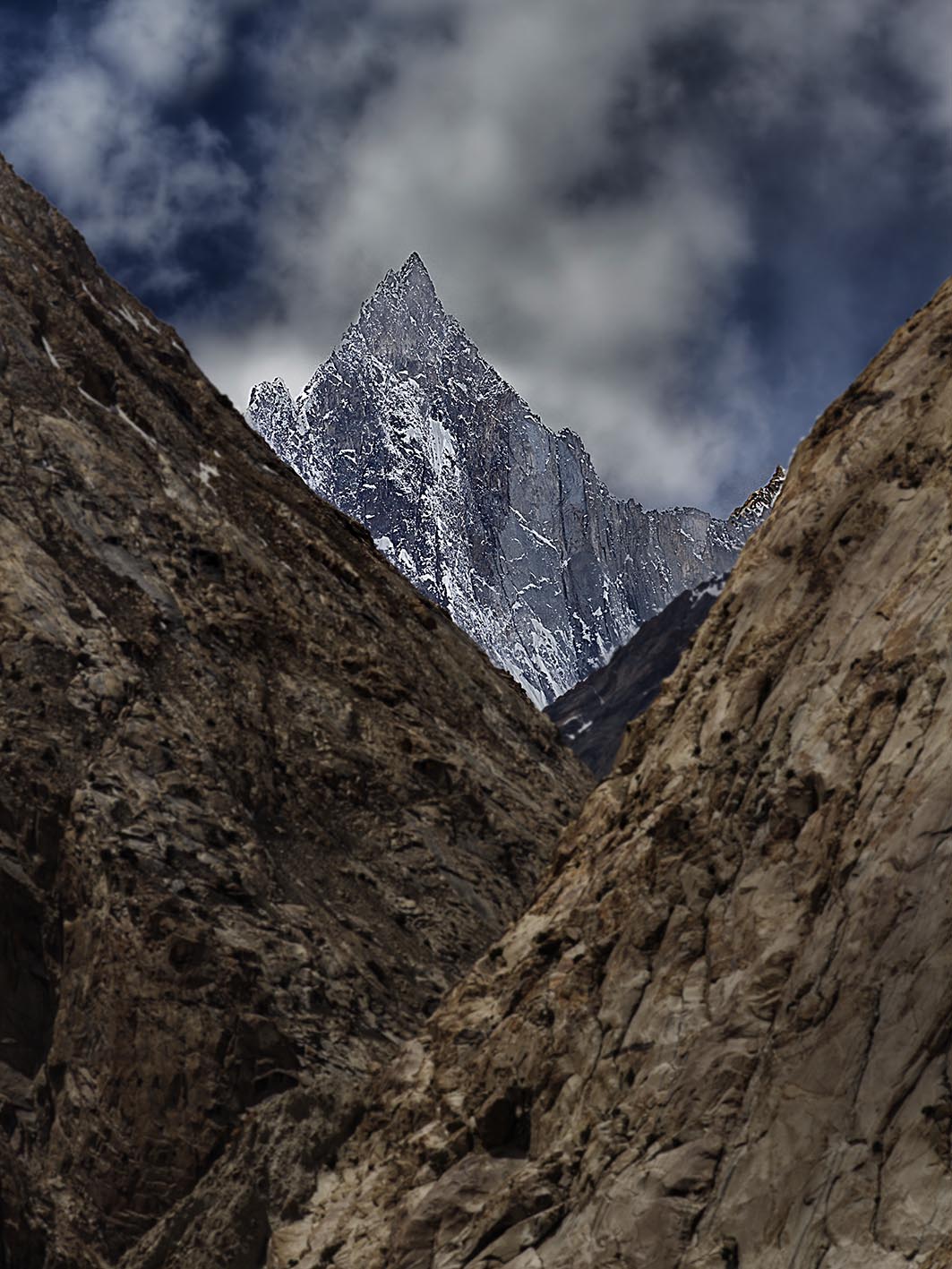
Pointed peaks of Karakoram range
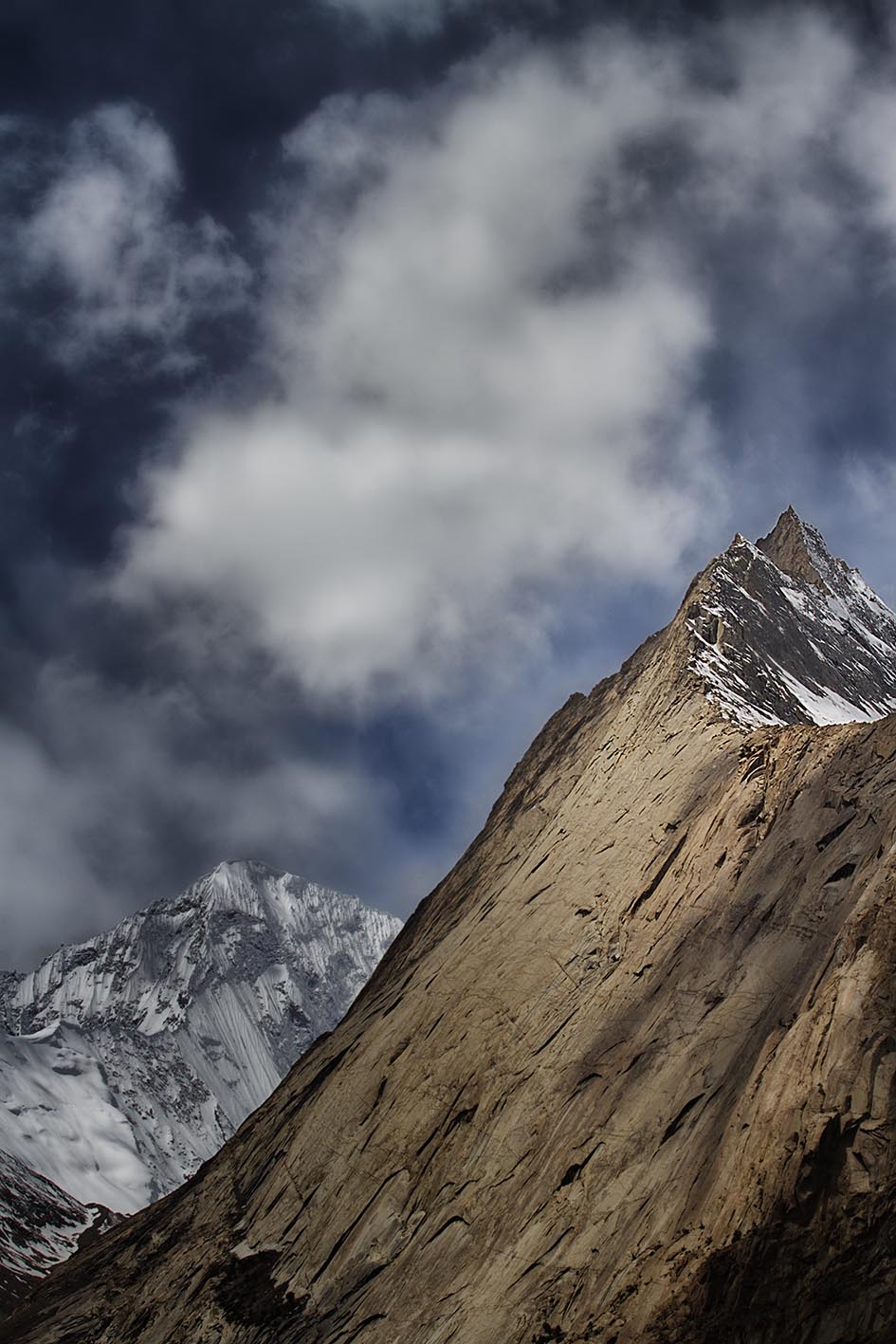
Pointed peaks of Karakoram range
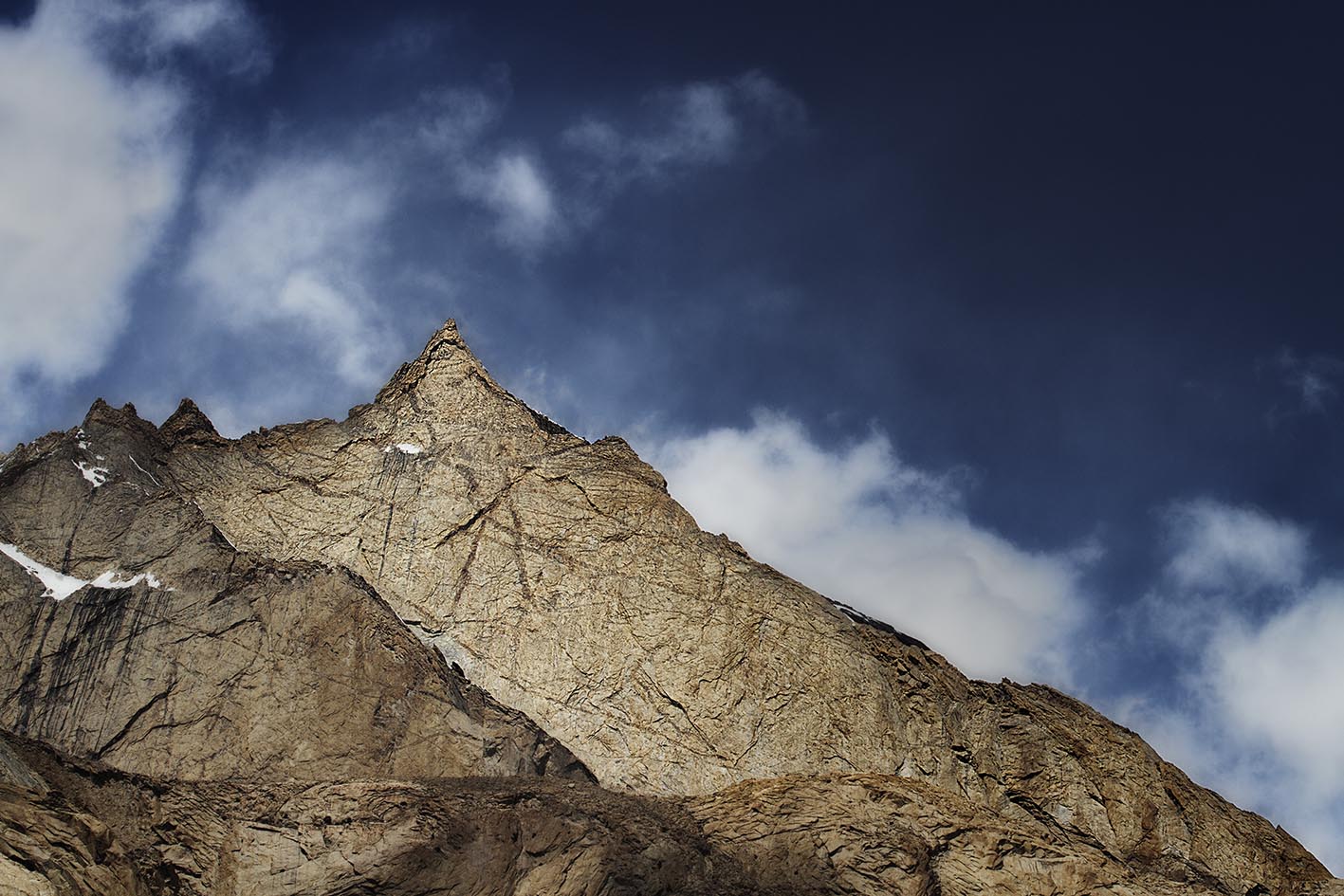
Pointed peaks of Karakoram range

Comments(6)
rajit punhani says:
April 28, 2014 at 11:08 amwonderful ! when was this ? reminds me of my days in ladakh some time ago; nubra valley itself has so much to offer esp the unique double humped camels; and of course these photos of siachen are exclusive !!
Hemani says:
April 28, 2014 at 11:42 amBeautiful photography Amardeep… Can’t imagine what it must be like to be there. Also the correlation between Siachen and Kabir’s baani… I wonder how close you must have felt to the creator that this came to your mind..
adarsh says:
April 28, 2014 at 5:55 pmWow, its simply magnificent, excellent pictures….the range is so huge, wonder what it must have felt to be there n capture such exclusive shots.
Karamjeet Singh says:
April 29, 2014 at 12:03 pmTruly ! very exclusive shots of remote and forbidden mountains of Siachen.How did you reach those heights in itself must have been wondrous and thrilling.No doubt the ecstasy felt by you is supported by the Shlok of Bhagat Kabir in the Adi Granth.Mapping gives a vivid picture of the terrain.Nice job,Good luck!
Surupa Chatterjee says:
April 29, 2014 at 7:04 pmLoved the connect between the ranges and Kabir…..as expected…..magnificent abode of gods…….pristine , tranquil , privilege of a few…..
Jahanzeb Nazir Malik says:
October 22, 2014 at 2:14 pmIt was the “Land of Wild Roses” before it became the highest battlefield of the world. It was the Armageddon of storms but the human megalomania made it the combat zone between two potential nations of the world. We believe that Pakistanis or Indians feel pride that this frozen pool exists in their area but not sure whether they like this to be the bone of contention among them. By now, it would have become a necropolis of hundreds of soldiers. What if we make it a real Peace Park?